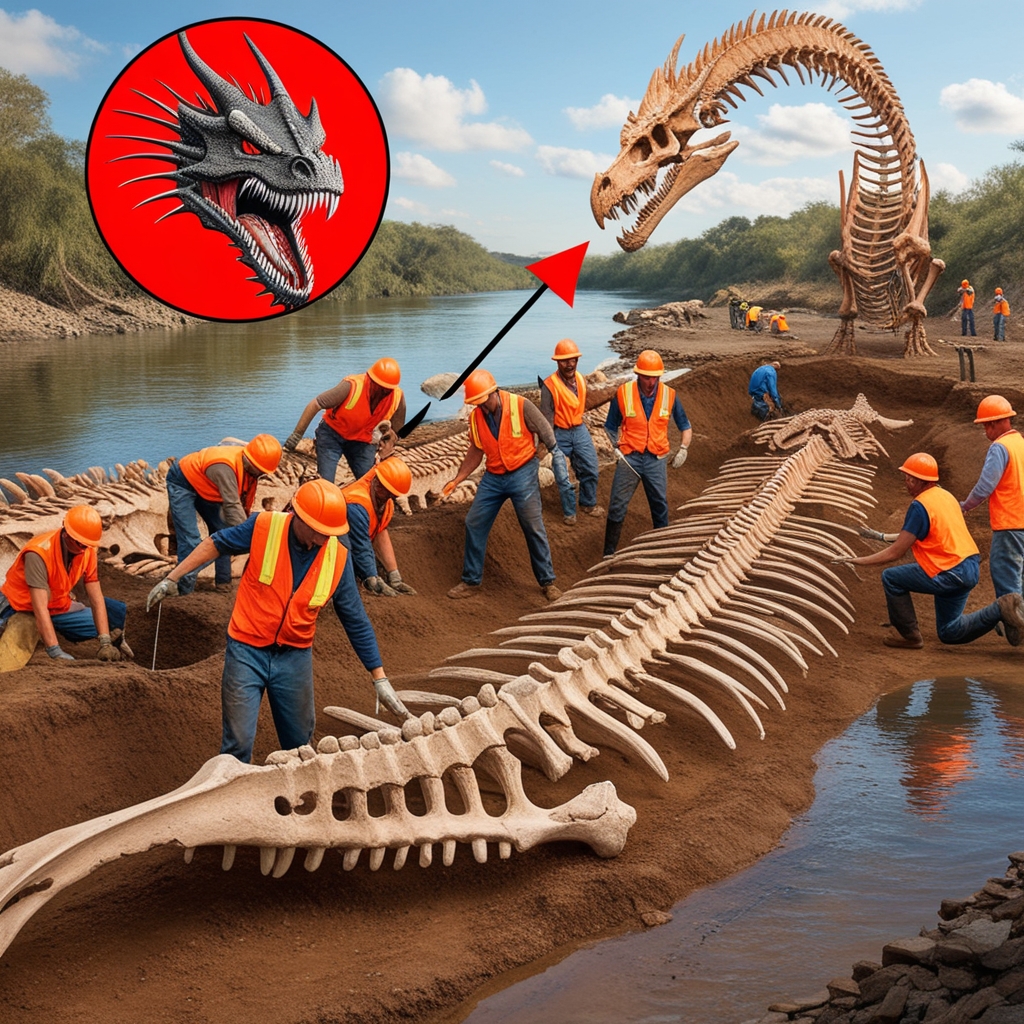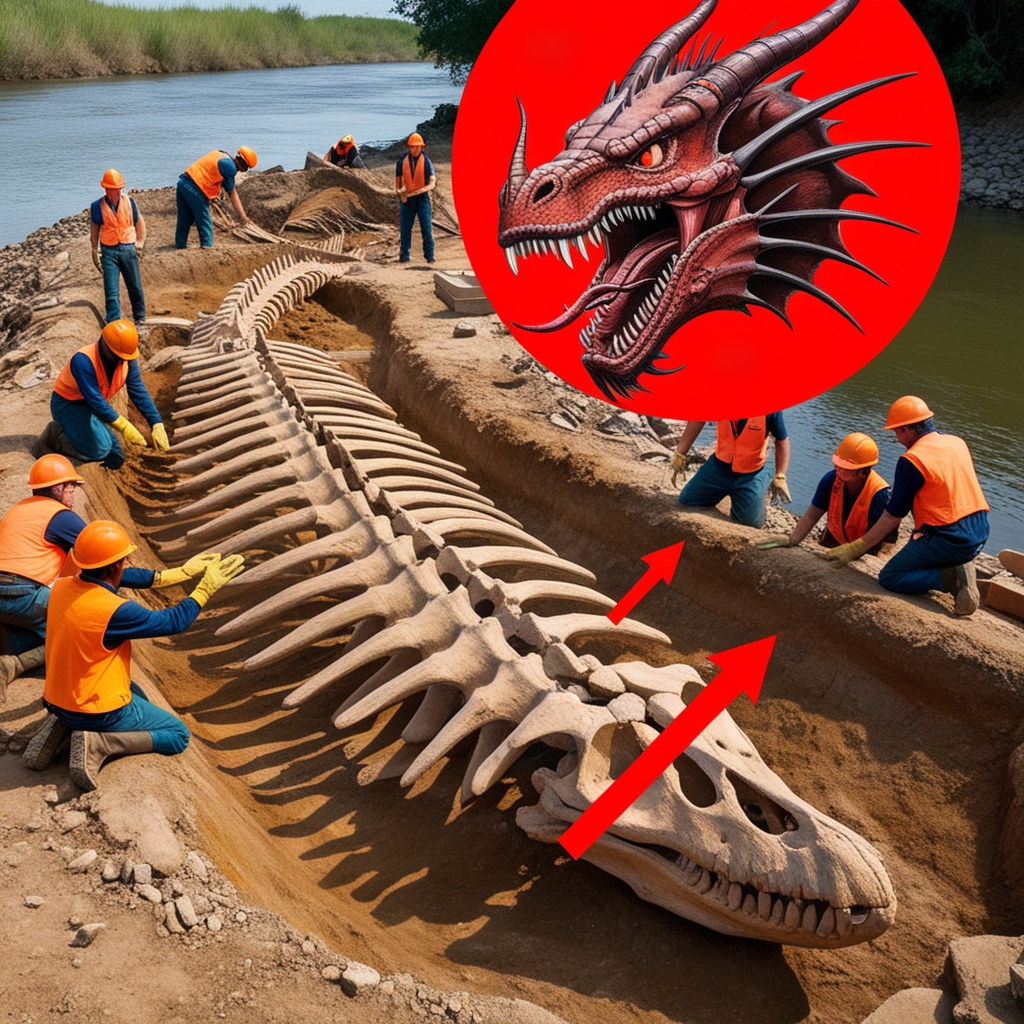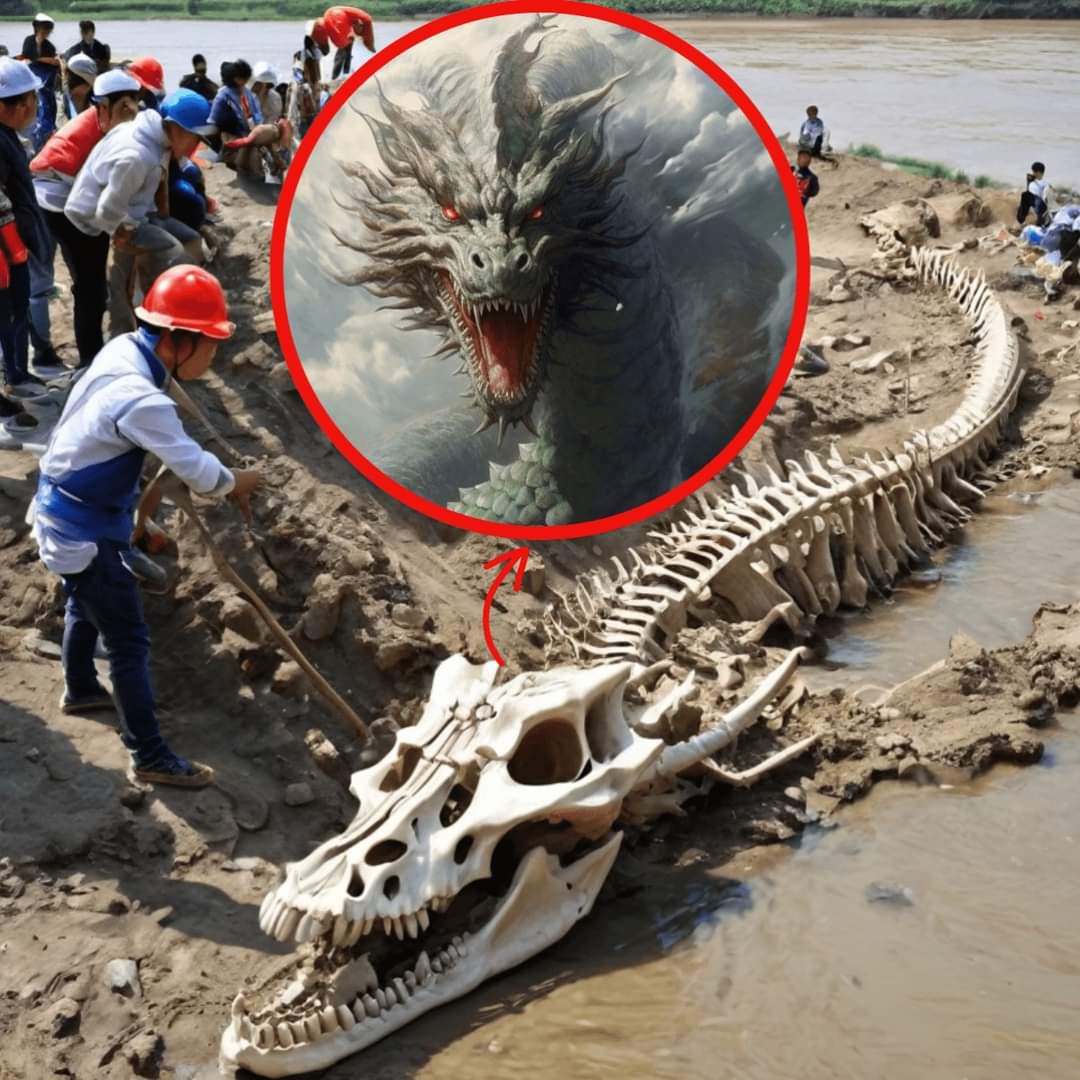
Shocking Discovery: Enormous Dragon Skeleton Unearthed on Indian Riverbank After Devastating Flood
 In a surprising turn of events, an enormous skeleton resembling that of a mythical dragon has been discovered along the banks of a river in India, following recent heavy floods. The unexpected find has left locals and experts in awe, sparking widespread speculation about the origins of this mysterious creature.
In a surprising turn of events, an enormous skeleton resembling that of a mythical dragon has been discovered along the banks of a river in India, following recent heavy floods. The unexpected find has left locals and experts in awe, sparking widespread speculation about the origins of this mysterious creature.
Uncovering the Legend
The skeleton was unearthed after severe flooding receded, revealing a massive, well-preserved structure. Measuring several meters in length, the remains include a long spine, ribcage, and a fearsome skull with sharp, elongated teeth. Its appearance has led many to believe that this could be evidence of a creature straight out of folklore—a dragon.

Workers and local residents quickly gathered around the site, taking pictures and videos that have since gone viral on social media. The scene of the excavation is reminiscent of stories from ancient mythology, where dragons were once thought to rule the skies and lands. Many are dubbing it the "Indian Dragon," a discovery that seems to blur the lines between myth and reality.
Scientific Analysis or a Mythical Discovery?
While the visuals of this giant skeleton are convincing and captivating, experts remain divided on the nature of the find. Paleontologists have been called in to examine the remains, with initial assessments suggesting that it could be a large prehistoric reptile, possibly a species of dinosaur or a yet-undiscovered marine creature. However, the unique shape of the skull and the structure of the bones differ from typical dinosaur fossils, fueling wild theories about its connection to dragon myths.

Skeptics argue that the skeleton might be a clever hoax or a product of digital manipulation, aimed at attracting media attention. However, locals and many onlookers believe it to be a significant discovery, potentially rewriting history and our understanding of mythical creatures.
The Role of Indian Folklore
India has a rich tapestry of myths and legends, many of which include stories of serpent-like dragons known as "Nagas." These mythical beings are often depicted as powerful, supernatural creatures living in rivers and lakes, guarding treasures, or serving as deities. The discovery of this skeleton has reignited interest in these ancient tales, with many drawing parallels between the uncovered remains and the legendary Nagas.
Could this be evidence of a real creature that inspired centuries of storytelling? Or is it simply a misidentified fossil, misinterpreted by an eager audience fascinated with the idea of dragons?
Global Reactions and Viral Sensation
The discovery has quickly become a global sensation, with the story being shared across social media platforms. Hashtags like #DragonSkeletonIndia and #RealLifeDragon have been trending, drawing comments and speculations from people worldwide. Many are eager to learn more about what this skeleton could mean for both science and mythology.
The scientific community is expected to conduct a detailed investigation, including carbon dating and DNA analysis, to determine the age and species of the skeleton. If it turns out to be an unknown species, it could be one of the most significant paleontological discoveries in recent history.
Final Thoughts
The unearthing of this giant skeleton has certainly captured the public's imagination, reigniting interest in legends and sparking debates about the possibility of mythical creatures existing in the distant past. While we await official confirmation from scientific experts, the story of this dragon-like skeleton continues to fascinate and astonish.
For now, the "Indian Dragon" remains a tantalizing mystery, one that could either debunk a long-standing myth or provide the evidence needed to believe that some legends may have a grain of truth to them.
Copyright © 2025 Amazing Stories. All rights reserved.